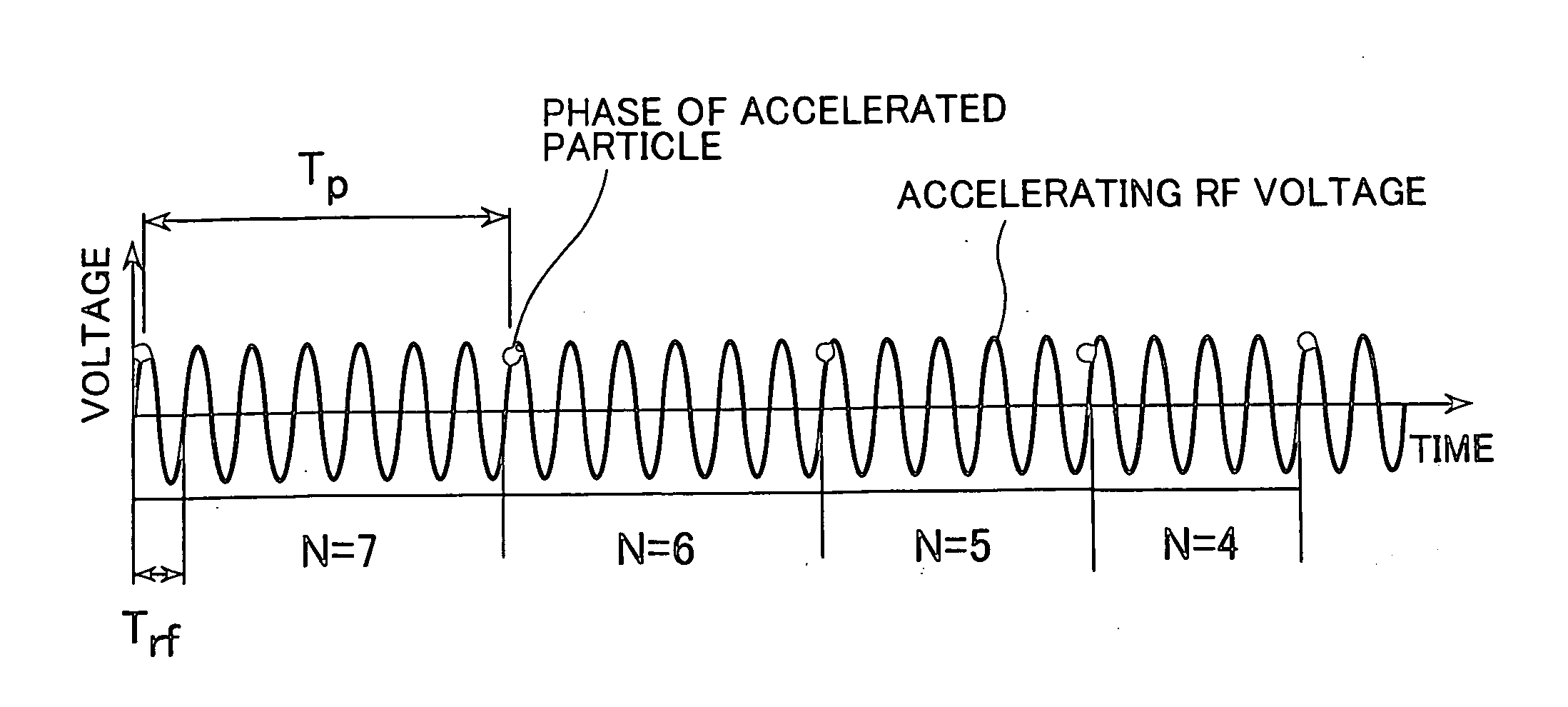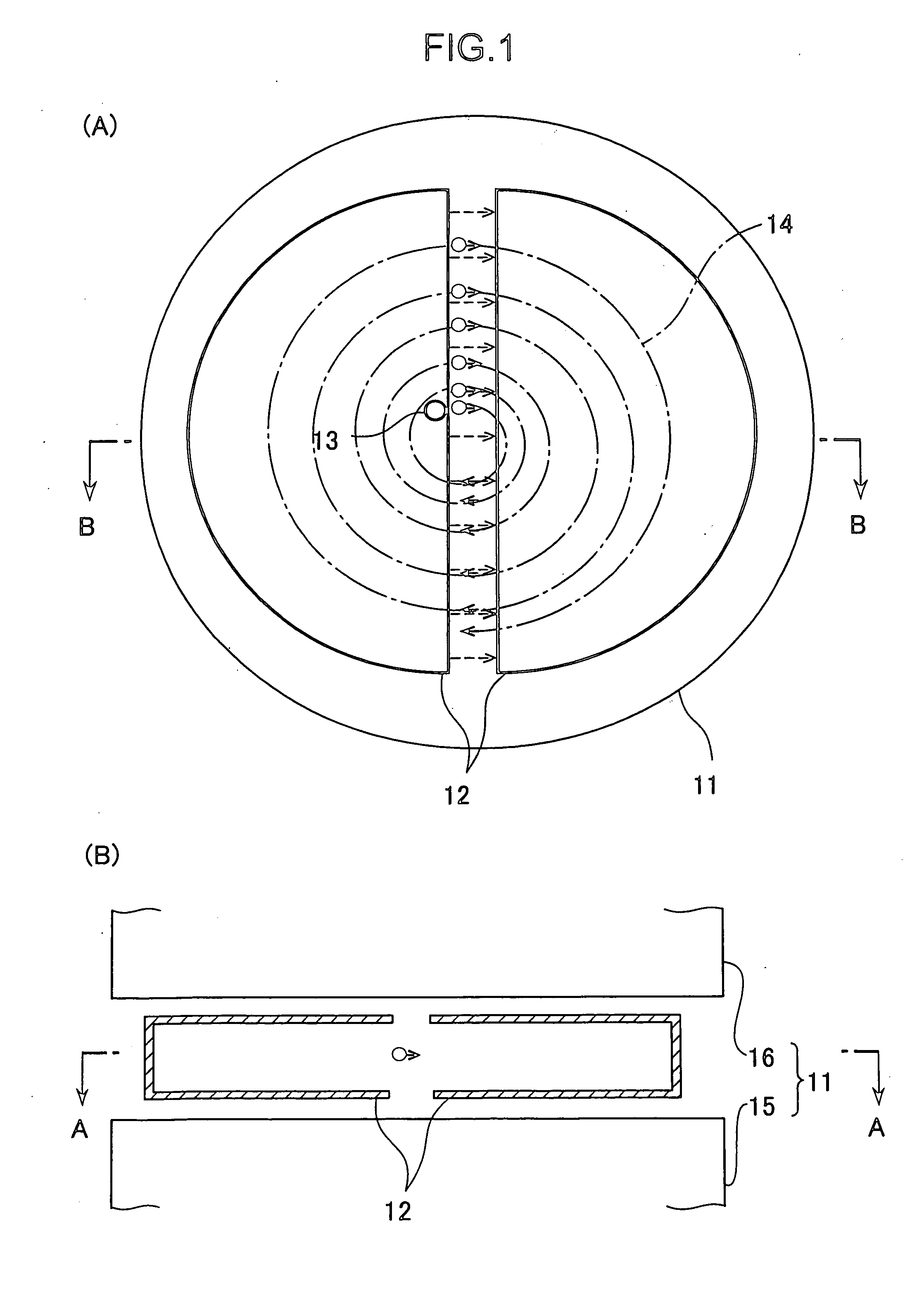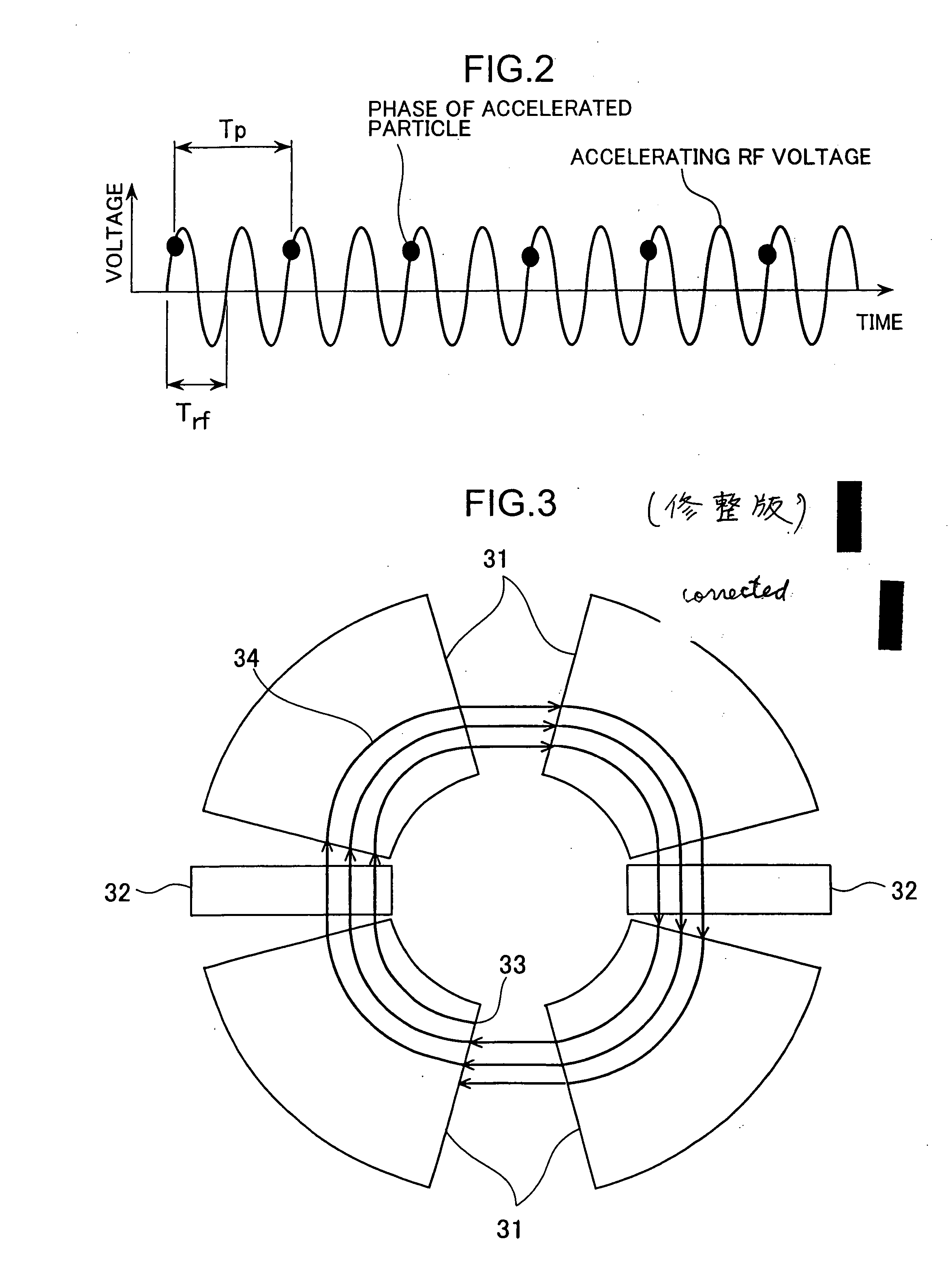Spiral orbit charged particle accelerator and its acceleration method
a particle accelerator and spiral orbit technology, applied in accelerators, klystrons, electric discharge tubes, etc., can solve the problem of limited proton energy accelerated with a moderate size cyclotron of about 200 mev, and achieve the effect of increasing the magnet size and increasing the energy gain
- Summary
- Abstract
- Description
- Claims
- Application Information
AI Technical Summary
Benefits of technology
Problems solved by technology
Method used
Image
Examples
example 1
Constant Accelerating Voltage
[0025] Because the accelerating voltage is constant for radiuses, the energy gain ΔE (Mev / u) for each revolution must satisfy Equation (8)
ΔTp=α·ΔE (8)
where α is constant given by acceleration condition.
[0026] Thus, the period (Tpn) after n revolutions is given by Equation (9)
Tpn=Tp0−n·ΔTp (9)
Where Tp0 is the particle revolution period at injection point.
[0027] The energy after n revolutions is given by Equation (10)
En=n·ΔE+E0 (10)
where E0 is the injection energy (Mev / u),
[0028] From Equations (8), (9), (10), (1) and (4), the radial magnetic field distribution that satisfies Equation (7) can be calculated.
[0029]FIG. 6 shows an example of the spiral orbit charged particle accelerators to which the present invention is applied. In this example, the parameters of acceleration are as follows:
[0030] injection radius: 0.55 m
[0031] extraction radius: 1.19 m
[0032] accelerated ion: C+6
[0033] incident Energy: 4 MeV / u
[0034] extraction energy:...
example 2
[0039] An averaged magnetic field BR at a radius R given by an Equation of BR=BRi (R / Ri)m where Ri is an injection radius and BRi is a magnetic field at the injection radius.
[0040] Because the radial magnetic field distribution is already given, the radial electric field distribution should be determined to satisfy Equation (7).
[0041] The above mentioned magnetic field condition is rewritten by:
B(n)=BRi(R(n) / Ri)m (11)
where n is the number of particle revolutions, R(n) is the averaged radius at n revolutions, B(n) is the averaged magnetic field at the radius of R(n).
[0042] The every particle revolution period must satisfies Equation (12) as hollows:
Tp(n+1)=Tp(n)−ΔTp (12)
where n is also the number of particle revolutions, Tp(n+1) is the period of particle revolution at (n+1) particle revolutions, Tp(n) is the period of particle revolution at (n) particle revolutions, and ΔTp satisfies Equation (7).
[0043] From Equations (12) and (1), the change of the particle revolution ...
example 3
[0056] When it is difficult to form the accelerating voltage distribution as shown in FIG. 7, a particle accelerator having the same magnetic field distribution as shown FIG. 7 can be designed by modulating the accelerating voltage according to the radius of the accelerated particle. FIG. 8 shows the time dependences of the accelerating voltage and of the particle energy. In this case, the accelerating voltage increases as the particles are accelerated. The obtained energy gain is the just same as that of the example 2 shown in FIG. 7 and further higher than that of example 1 shown in FIG. 6.
PUM
 Login to View More
Login to View More Abstract
Description
Claims
Application Information
 Login to View More
Login to View More - R&D
- Intellectual Property
- Life Sciences
- Materials
- Tech Scout
- Unparalleled Data Quality
- Higher Quality Content
- 60% Fewer Hallucinations
Browse by: Latest US Patents, China's latest patents, Technical Efficacy Thesaurus, Application Domain, Technology Topic, Popular Technical Reports.
© 2025 PatSnap. All rights reserved.Legal|Privacy policy|Modern Slavery Act Transparency Statement|Sitemap|About US| Contact US: help@patsnap.com



